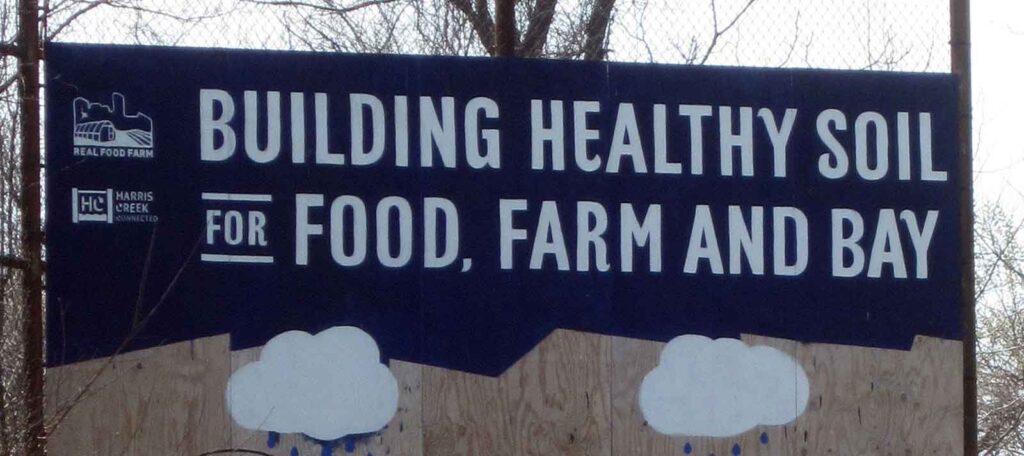Using Urban Farms as a Green Infrastructure Tool
Urban agriculture not only reduces stormwater runoff but it also increases the nutritional health of the surrounding community,

Polluted runoff is a major source of pollution for the Chesapeake Bay. The Chesapeake Bay Total Maximum Daily Load (TMDL) allocations were set as pollution caps that have an accompanying implementation plan that will ultimately restore the Bay’s water quality. All communities within the Chesapeake Bay watershed are subject to the Chesapeake Bay TMDL allocations. One way that communities are reducing their polluted runoff is by installing green infrastructure.
Urban agriculture is an innovative green infrastructure practice that can be implemented in vacant city lots. Urban agriculture not only reduces stormwater runoff but it also increases the nutritional health of the surrounding community, improves the local economy, and provides residents with greenspace.
American Rivers recently released a report entitled Urban Farms: A Green Infrastructure Tool for the Chesapeake Bay that discusses the benefits provided to waterways and communities when urban agriculture is used as a stormwater mitigation practice. The report recommends ten things that cities can do to help promote the use of urban agriculture as a green infrastructure tool.
- Provide training and education for urban farmers through accessible workshops on best stormwater management practices. Best practices will help cities meet their stormwater management goals.
- Identify viable vacant lots to be converted for the purpose of urban agriculture. Cities can determine which sites are best for agricultural practices and work with urban farmers to create site plans to meet the city’s requirements, reduce runoff, and grow sustainable crops.
- Eliminate the barriers to purchasing or obtaining a long term lease of a vacant lot. Allowing farms to make a long term commitment will open the door to more funding opportunities. Funders prefer to invest in opportunities that will continually improve the surrounding watershed.
- Offer farmers access to funding opportunities for the incorporation of green infrastructure. Cities can create grant programs, offer guidance on the application process, or communicate existing opportunities.
- Allow a tax credit for farms that include green infrastructure into their farm design. Many cities offer tax credits to home owners who install rain barrels or gardens in their home because it helps the city meet their stormwater goals. Urban farms should be encouraged to implement rainwater capture and re-use systems through this type of incentive.
- Include urban agriculture as a permitted use in city zoning code. Many cities do not address urban agriculture in their zoning codes, making it seem that it is a prohibited use of land. Listing urban agriculture as a permitted use shows the city is supportive of efforts to provide neighborhood access to healthy food and create greenspace.
- List stormwater management as a benefit or definition of urban agriculture. Urban agriculture can be an effective green infrastructure practice. Identifying the stormwater management benefits of urban agriculture helps increase acceptance and adoption of urban agriculture and ensure that urban farms contribute to municipal stormwater management.
- Require urban farms to develop a stormwater management plan if they increase the amount of impervious surface on the lot. Placing structures on vacant lots, such as hoop houses, may actually increase the lot’s impervious surface and create increased runoff. Some cities and farms address this problem by incorporating water re-use systems that collect runoff from structures and re-use in plant production.
- Require soil tests and a nutrient management plan if using soil amendment. Whenever nutrients are added to the soil, it is important to conduct soil tests to determine how much is actually needed and continue to monitor the addition to avoid runoff into nearby streams and storm drains.
- Continue communication with the farms to ensure they are compliant with the city’s urban agriculture ordinance. Creation of an urban agriculture working group enables farmers and city officials to address barriers to urban agriculture and determine new farming policies to address those barriers together.
For a more in depth look at these recommendations please read Urban Farms: A Green Infrastructure Tool for the Chesapeake Bay!



